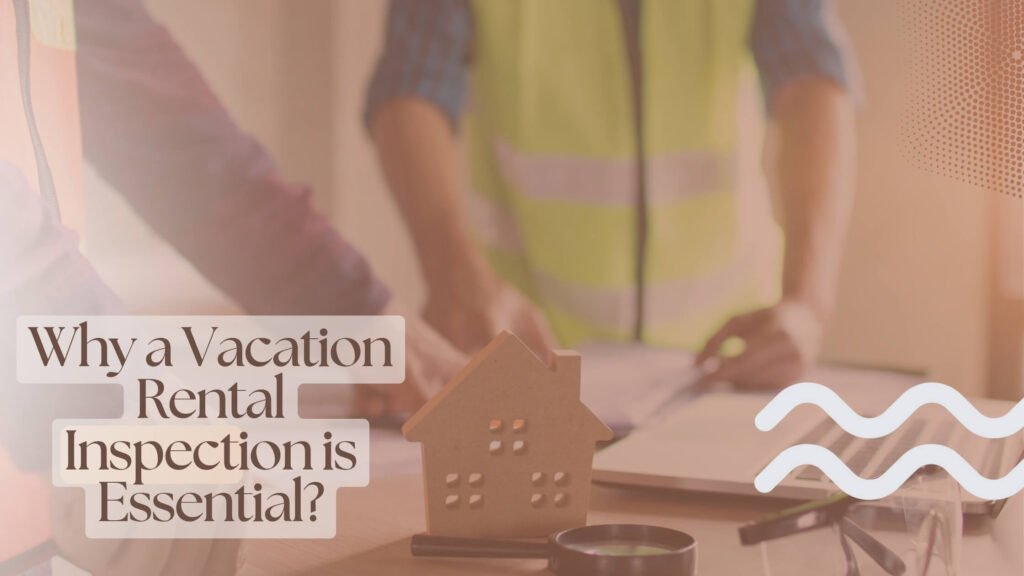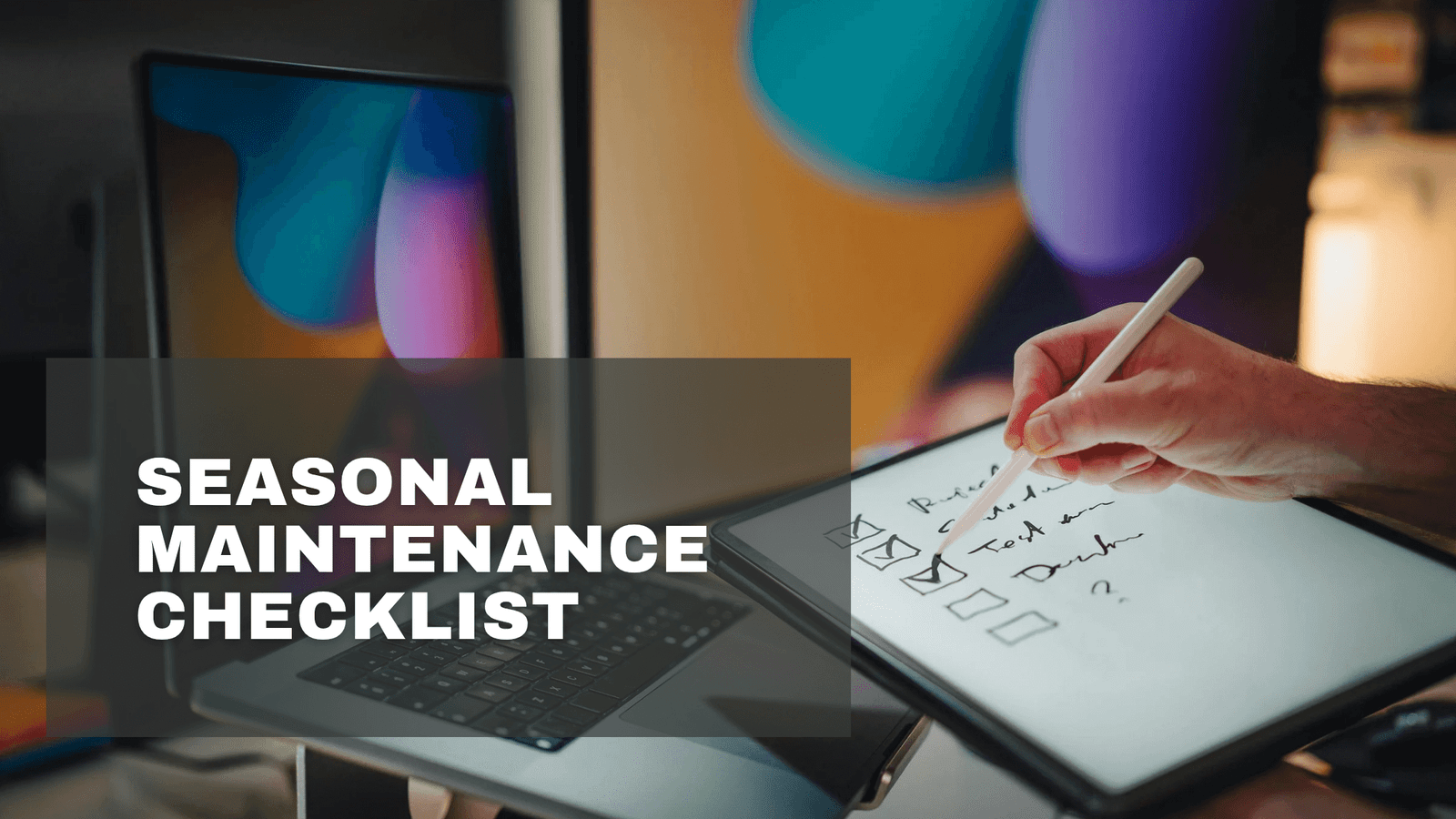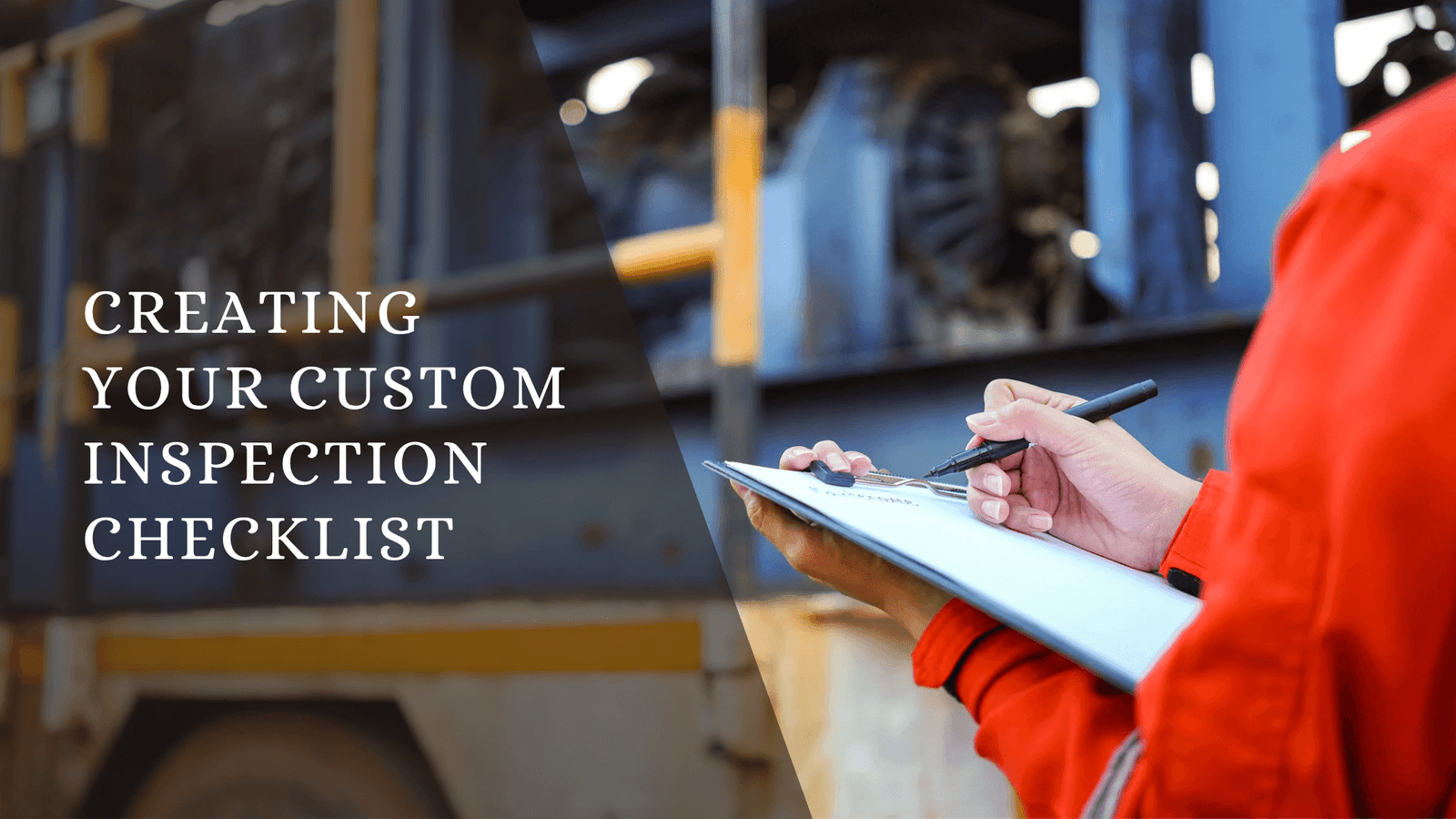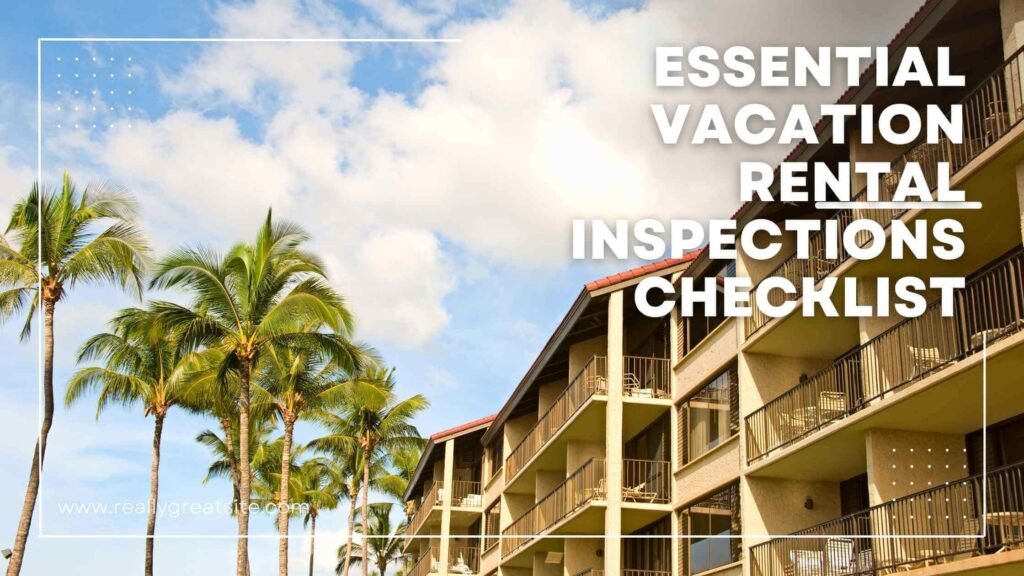Owning a vacation rental isn’t just about offering a cozy place to stay — it’s about delivering a consistently safe, clean, and welcoming experience for every guest. Whether you’re managing a single Airbnb or multiple short-term rentals, regular property inspections are one of the most important habits for success.
From preventing costly maintenance issues to boosting guest satisfaction and 5-star reviews, a thorough vacation rental inspection can make all the difference.
In this blog, we’ll walk you through an essential vacation rental inspections checklist to help you stay organized, protect your investment, and ensure your property is always guest-ready.
Whether you’re preparing for a check-in, assessing post-departure damage, or doing seasonal upkeep, this guide covers everything you need to inspect — and why it matters.
Why a Vacation Rental Inspection is Essential?

Here’s why inspections are so important:
1. Protect Your Property Investment
Regular inspections help catch small issues before they turn into expensive repairs. From leaky faucets to worn-out appliances, early detection can save you time and money.
2. Enhance Guest Experience
Guests expect a flawless stay — and a thorough inspection ensures everything works as it should. Functional amenities, clean spaces, and a safe environment lead to better reviews and higher occupancy rates.
3. Ensure Safety and Compliance
Checking for working smoke detectors, carbon monoxide alarms, secure locks, and proper lighting isn’t optional — it’s essential for guest safety and often required by local laws.
4. Boost Ratings and Reputation
Clean, well-kept rentals consistently outperform others on platforms like Airbnb, Vrbo, and Booking.com. Inspections play a key role in maintaining a 5-star standard that attracts repeat guests and referrals.
5. Streamline Turnovers and Cleaning
Inspections help coordinate your cleaning and maintenance teams more efficiently. Knowing what needs attention before the next check-in reduces last-minute stress and ensures nothing gets overlooked.
When to Conduct Inspections?
Consistency is key when it comes to maintaining a high-performing vacation rental. Knowing when to inspect your property is just as important as what to inspect. Here are the most important times to schedule a thorough walkthrough:
1. Before Guest Check-In
A pre-arrival inspection ensures everything is clean, functional, and welcoming. It’s your last chance to catch any issues before guests walk through the door — from a burnt-out lightbulb to a Wi-Fi outage.
2. After Guest Check-Out
A post-departure inspection helps you identify any damage, missing items, or extra cleaning needs. It also prepares the space for your cleaning team and the next set of guests.
3. Seasonal Maintenance Checks
At least twice a year — typically in the spring and fall — you should conduct a more detailed inspection. This includes HVAC servicing, deep cleaning, and checking for wear and tear caused by seasonal weather.
4. After Severe Weather Events
Storms, heavy rain, snow, or extreme heat can take a toll on your property. A quick inspection afterward ensures no damage has occurred to the roof, plumbing, or outdoor areas.
5. Regularly Scheduled Deep Inspections
Beyond turnovers, it’s smart to do a full-property inspection monthly or quarterly. This is especially useful if your rental sees frequent guests and high turnover rates.
Pre-Arrival Vacation Rental Inspection Checklist
A smooth check-in starts with a well-prepared property. The pre-arrival inspection is your opportunity to walk through the vacation rental with fresh eyes — just like your guest will. Use this checklist to make sure everything is in perfect order:
1. Cleanliness
Surfaces dusted and sanitized Floors swept, mopped, or vacuumed Bathrooms disinfected and spotless Kitchen counters, sink, and appliances cleaned Fresh linens and towels placed properly
2. Appliances and Electronics
- Test all major appliances (fridge, stove, microwave, dishwasher)
- Check washer/dryer functionality (if available)
- Confirm TV, remote controls, and streaming services work
- Verify coffee maker, toaster, and other small appliances are clean and functional
3. Climate Control
- Test HVAC system (heating/AC)
- Set a comfortable indoor temperature for arrival
- Ensure fans and thermostats work correctly
4. Internet & Connectivity
- Confirm Wi-Fi is active and the network/password is visible
- Test internet speed and reliability
- Make sure smart locks, security systems, or smart home devices are online
5. Lighting & Fixtures
- Replace any burnt-out bulbs
- Test all light switches, lamps, and dimmers
- Check night lights or exterior lights for safety
6. Security and Entry
- Ensure all doors and windows lock securely
- Test keypads or smart lock access codes
- Confirm backup keys or lockboxes are in place and accessible
7. Plumbing and Water
- Check for leaks under sinks and around toilets
- Run faucets and showers to test water pressure and temperature
- Confirm hot water heater is functioning
8. Guest Essentials & Amenities
- Stocked toiletries (shampoo, soap, toilet paper)
- Kitchen basics (dish soap, paper towels, salt, pepper, etc.)
- Fresh coffee, tea, or welcome snacks
- Guidebook or welcome instructions are visible and updated
A successful pre-arrival inspection ensures guests are greeted with comfort, convenience, and confidence.
Post-Departure Inspection Checklist
Once your guests check out, it’s time to evaluate the condition of your property and prepare for the next stay. The post-departure inspection helps you identify any issues, track damages, and ensure your rental remains in top shape.
Here’s what to look for:
1. Damage Assessment
- Inspect furniture, walls, and flooring for scuffs, stains, or dents
- Check electronics and appliances for any signs of misuse or malfunction
- Examine doors, windows, and locks for damage or forced entry signs
- Take photos of any new damage for documentation and possible claims
2. Missing or Misplaced Items
- Inventory towels, linens, and kitchenware
- Verify decorative items and electronics are in place
- Check for missing remote controls, keys, books, or guide materials
- Ensure nothing left behind by guests (handle respectfully or according to local regulations)
3. Trash and Cleanliness
- Ensure all trash has been removed from bins (including outdoor bins)
- Check for leftover food in the fridge, pantry, or cabinets
- Scan for spills or messes that require deep cleaning
4. Restocking Essentials
- Refill paper towels, toilet paper, soap, shampoo, and dish detergent
- Restock coffee, tea, and other welcome items
- Replace used linens, towels, and any disposable items
5. Laundry and Linen Check
- Collect all used towels and bedding
- Inspect linens for stains or wear and replace if necessary
- Ensure clean, fresh linens are prepped for the next guest
6. Pest and Hygiene Check
- Look for signs of pests (insects, rodents, etc.) in the kitchen, pantry, or corners
- Check under furniture and in dark areas for cleanliness
- Ensure there are no strange odors or moisture issues
Seasonal Maintenance Checklist

1. HVAC and Air Quality
- Service heating and cooling systems before the season starts
- Replace or clean air filters
- Check for signs of mold, mildew, or blocked vents
- Test thermostat settings for both heating and cooling modes
2. Roof, Gutters & Drainage
- Inspect the roof for missing shingles, leaks, or damage
- Clean out gutters and downspouts to prevent water buildup
- Check for proper drainage around the foundation
3. Plumbing and Water Systems
- Inspect pipes for signs of leaks or corrosion
- Test water pressure and check for slow drains
- Insulate exposed pipes before winter
- Check hot water heater function and sediment buildup
4. Outdoor Areas
- Clean and inspect decks, patios, outdoor furniture
- Trim trees and shrubs away from the house
- Pressure wash exterior siding, driveway, and walkways
- Prepare outdoor spaces for the upcoming season (e.g., cover grills in winter, open pool in summer)
5. Safety Equipment Check
- Test and replace batteries in smoke and CO detectors
- Confirm fire extinguishers are fully charged and not expired
- Inspect emergency exit lighting and first aid kits
6. Deep Cleaning Tasks
- Shampoo carpets and upholstery
- Wash windows inside and out
- Clean behind and underneath large appliances
- Dust ceiling fans, vents, and baseboards
7. Electrical System Check
- Inspect outlets and switch plates for signs of wear or overheating
- Check outdoor lighting and motion sensors
- Test backup generators (if available)
Seasonal inspections are an investment in your property’s long-term health and guest satisfaction.
Safety & Compliance Checklist
A safe rental isn’t just good hospitality — it’s a legal requirement in many areas. Regular safety inspections help protect your guests, reduce liability, and ensure you meet all local regulations.
Use this checklist to keep your vacation rental compliant and secure:
1. Fire Safety
- Test all smoke detectors and replace batteries
- Ensure carbon monoxide detectors are installed and working
- Confirm fire extinguishers are accessible, visible, and not expired
- Keep all exits clear and marked with appropriate signage
- Remove fire hazards such as faulty wiring or flammable materials near heat sources
2. Doors, Windows & Locks
- Check all entry points for secure locks and working keys or codes
- Test smart locks or keypad entry systems for reliability
- Ensure windows lock properly and open smoothly for emergency exits
- Install window restrictors for upper-level units (especially in family-friendly rentals)
3. Emergency Preparedness
- Provide a fully stocked first aid kit in an easy-to-find location
- Post clear emergency contact numbers and evacuation instructions
- Include property address and Wi-Fi info in printed or digital house manuals
- Mark fire exits or escape routes, especially in multi-story buildings
4. Electrical and Gas Systems
- Inspect outlets, light switches, and wiring for safety
- Test circuit breakers and label them clearly
- Have any gas appliances (stoves, water heaters) inspected annually
- Install surge protectors for electronics and kitchen appliances
5. Special Features: Pools, Hot Tubs, and Balconies
- Install gates, fences, or covers for pools and hot tubs
- Post pool safety rules and maintenance logs
- Check balcony railings for stability and height compliance
- Remove or secure ladders, grills, or other items that pose fall/fire risks
6. Legal Compliance
- Display short-term rental permit or license number (if required)
- Follow local occupancy limits and noise regulations
- Keep up-to-date with municipal rental laws or HOA rules
- Provide insurance documentation and liability disclaimers
Tools and Apps to Simplify Inspections
Keeping your vacation rental inspection process efficient and organized doesn’t have to be overwhelming — thanks to digital tools designed specifically for property managers and hosts. These apps and platforms can help you streamline tasks, track maintenance, and stay ahead of potential issues.
1. Property Management Software
These all-in-one tools allow you to schedule cleanings, inspections, guest communication, and more.
- Hostfully – Offers a complete property management platform with task automation and digital guidebooks
- Lodgify – Integrates booking, messaging, and maintenance tracking in one dashboard
- Guesty – Great for scaling operations with built-in task management and analytics
2. Inspection and Maintenance Apps
These apps are built to simplify checklists, assign tasks, and
monitor property condition over time.
- iAuditor by SafetyCulture – Customizable inspection forms with photo uploads and real-time reporting
- Properly – Specifically designed for vacation rental operations, with visual checklists and cleaner coordination
- EZ Inspections – Offers mobile inspection reports, ideal for remote property owners
3. Digital Checklist Tools
Digital checklist tools help you stay consistent and make it easy to train new cleaners or co-hosts.
- Google Forms or Sheets – Free and easy way to create sharable checklists
- Trello – Visual task boards that work well for small teams and ongoing maintenance
- Asana – Great for managing recurring inspection workflows across multiple properties
4. Automated Reminders & Scheduling
Use calendar apps or task schedulers like Google Calendar, Notion, or ClickUp to set regular inspection reminders Link inspections to turnover days so nothing falls through the cracks
How to Create Your Custom Inspection Checklist?

Step 1: Consider Your Property Type
Think about the structure and layout:
- Is it a single-family home, apartment, cabin, or condo?
- Does it have a pool, hot tub, balcony, fireplace, or basement?
- Are there multiple floors or entry points?
Tailor your checklist to include all property-specific areas that require attention.
Step 2: Break It Down by Zone
Organize your checklist by area for better clarity and flow:
- Entryway
- Living room
- Kitchen
- Bedrooms
- Bathrooms
- Outdoor spaces (patio, balcony, garden)
- Utility and storage rooms
This helps your team (or yourself) follow a logical inspection path and ensures no space is missed.
Step 3: Use Clear, Actionable Items
Each item on your checklist should be easy to understand and measurable:
- “Check smoke detector battery” instead of “Inspect safety features”
- “Wipe and sanitize kitchen countertops” instead of “Clean kitchen”
Clear tasks reduce confusion and ensure consistent results.
Step 4: Include Photo or Note Sections
Add space for quick notes or photo uploads, especially for maintenance teams or remote co-hosts. This is useful for:
- Reporting damage
- Confirming task completion
- Keeping a visual log for recurring issues
Step 5: Keep It Dynamic
Update your checklist as needed:
- Add new appliances or amenities
- Adjust for seasonal changes
- Refine it based on guest feedback or staff suggestions
A living document evolves with your property and keeps your standards high.
Conclusion
Regular inspections are the backbone of a successful vacation rental business. By following a thorough and well-organized inspection checklist, you can protect your investment, ensure guest safety and comfort, and maintain the high standards that lead to glowing reviews and repeat bookings.
Whether it’s a quick pre-arrival walkthrough or a deep seasonal maintenance check, taking the time to inspect your property systematically pays off in peace of mind and a smoother hosting experience. Use the checklists and tools shared in this guide to create a reliable routine that works for your unique rental.




